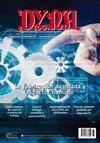人工智能在电池回收方面提供的机会
IF 0.7
4区 工程技术
Q3 ENGINEERING, MULTIDISCIPLINARY
引用次数: 0
摘要
新的全球脱碳和能源转型指导方针使工业部门向更可持续的替代品转变。为此,数字化转型和在技术进步的前沿实施新解决方案等现象正在帮助加速这些变化。未来社会和工业的关键部门,如电池,已经在使用基于大数据、机器学习和人工智能解决方案的不同工具来优化其设计和生产阶段,目的是推动一个预计到本十年末将达到近4.9太瓦时需求的行业。然而,这些前景也带来了一个重大的长期挑战:所有这些设备的回收利用。考虑到这是一个在可持续性和循环性方面标准越来越严格的行业,在优化当前回收流程和开发新建议和方法方面,上述数字解决方案可以再次发挥关键作用。本文旨在准确地确定基于人工智能的解决方案可以为电池回收行业的活动带来的一系列机会。特别是在最有前途的技术路线(如湿法冶金、火法冶金或直接回收)的开发、演变和优化方面,以应对电池价值链未来战略活动的挑战和需求。关键词:电池,回收,回收,废物,人工智能,自动化,湿法冶金,火法冶金,直接回收本文章由计算机程序翻译,如有差异,请以英文原文为准。
OPPORTUNITIES OFFERED BY ARTIFICIAL INTELLIGENCE IN BATTERY RECYCLING
The new global decarbonization and energy transition guidelines have caused the industrial sector to undergo a metamorphosis towards more sustainable alternatives. To this end, phenomena such as digital transformation and the implementation of new solutions at the forefront of technological advances are helping to accelerate these changes. Key sectors for the future of society and industry, such as batteries, are already employing different tools based on big data, machine learning and artificial intelligence solutions to optimize both their design and production phases, with the aim of boosting a sector that is expected to reach a demand of almost 4.9 TWh by the end of this decade. However, these prospects also pose a major long-term challenge: the recycling of all these devices. Considering that this is an industry with increasingly stringent standards in terms of sustainability and circularity, this is where, once again, digital solutions such as those mentioned above can play a key role, both in terms of optimizing current recycling processes and developing new proposals and approaches. This paper aims to identify precisely that set of opportunities that artificial intelligence-based solutions can present to the battery recycling industry in its activities. Especially, in terms of development, evolution and optimization of the most promising technological routes (such as hydrometallurgy, pyrometallurgy or direct recycling), in order to respond to the challenges and needs of a strategic activity for the future of the battery value chain. Keywords: Batteries, Recycling, Recovery, Waste, Artificial Intelligence, Automation, Hydrometallurgy, Pyrometallurgy, Direct Recycling.
求助全文
通过发布文献求助,成功后即可免费获取论文全文。
去求助
来源期刊

Dyna
工程技术-工程:综合
CiteScore
1.00
自引率
10.00%
发文量
131
审稿时长
6-12 weeks
期刊介绍:
Founded in 1926, DYNA is one of the journal of general engineering most influential and prestigious in the world, as it recognizes Clarivate Analytics.
Included in Science Citation Index Expanded, its impact factor is published every year in Journal Citations Reports (JCR).
It is the Official Body for Science and Technology of the Spanish Federation of Regional Associations of Engineers (FAIIE).
Scientific journal agreed with AEIM (Spanish Association of Mechanical Engineering)
In character Scientific-technical, it is the most appropriate way for communication between Multidisciplinary Engineers and for expressing their ideas and experience.
DYNA publishes 6 issues per year: January, March, May, July, September and November.
 求助内容:
求助内容: 应助结果提醒方式:
应助结果提醒方式:


